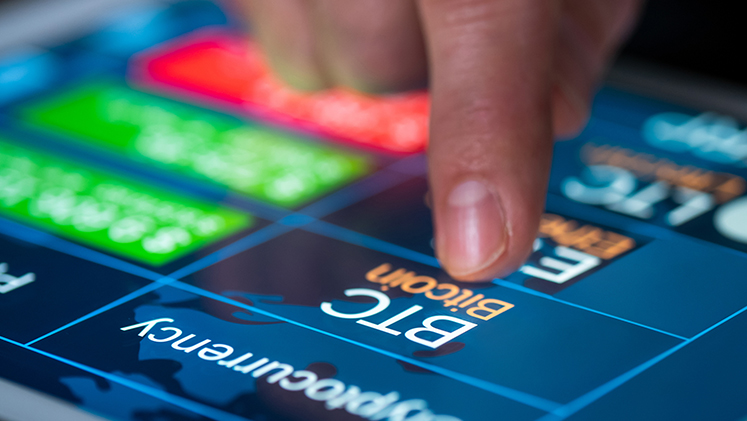Q and A: Cryptocurrency
5 March 2020
Sometimes the key to staying safe online and using new technology lies in knowing and understanding the basics. We recently linked up with one of our members, Contis, more specifically Tobias Neale their Head of Client Services, to ask some commonly asked questions surrounding cryptocurrency.
Q: What is cryptocurrency?
A: Cryptocurrency is a digital currency that runs on blockchain. It works by coding and decoding text via cryptography. Given that cryptography has been around since at least ancient Greece, this is not a new concept, but it has definitely been modernised.
The best-known cryptocurrency is Bitcoin, which was launched in 2009 and has made headlines for how volatile it has been, with people both making and losing millions as the value changes. Over time, other blockchains and cryptocurrencies have been launched. Some specifically trying to solve this volatility, for example Dai Coin which runs on Ethereum, a stable coin pegged to the value of another asset or group of assets (such as € or $).
Q: What are the main cryptocurrencies?
A: There are an ever-increasing number of cryptocurrencies, but a few of the better known ones include: Bitcoin, the first; Ether, created by a non-profit Ethereum Foundation in Switzerland; and Ripple, which came onto the scene in 2012 and is both a cryptocurrency and digital payment network.
Q: How is crytpocurreny affected by fraud?
A: As with anything, cryptocurrencies are plagued by scams.
Phishing emails are very popular, along with buying items with cryptocurrencies but never receiving them. While this isn’t new or unique to the crypto world, it’s particularly damaging because consumers have few rights since the industry is not regulated. In addition, you can send a cryptocurrency anywhere in the world in seconds with very little traceability, which has meant it has had more than its fair share of fraud and developed a relatively bad reputation. However, there are companies that now specialise in solving this on the exchange side, such as Chainalysis. For anyone that then converts into Fiat currency (USD, GBP or EUR) using a company like Contis, there are additional layers of security such as, KYC, PEPS, Sanctions, reduced limits and real time fraud systems, such as ARIC - run by Featurespace.
Q: Blockchain? Can it help?
A: Invented in 2008, blockchain technology is essentially a growing list of records all linked together using cryptography. Each block contains a hash of the previous block, a time stamp and the transaction data. With this structure, it is not possible to alter the chain’s history, which by design makes it more secure as the whole database is authenticated by the rest of the network on a peer-to-peer basis. Decentralisation is key to how the blockchain operates.
Hashing is a key part to this process. In simple terms, it’s generating a value or values from a string of text using math. The process can take an input string of any length, run it through an algorithm, and will return an output of a fixed length, for example Bitcoin uses SHA-256. Hashing is one of the ways to secure this type of transaction, based on six key properties;
Property 1: Deterministic
Property 2: Quick computation
Property 3: Pre-image resistance
Property 4: Small changes in the input changes the Hash.
Property 5: Collision Resistant
Property 6: Puzzle Friendly
Blockchain is designed to be decentralised. Whenever someone spends or transfers cryptocurrency, their entry joins a queue ready to be added to the public database. Before that can happen, however, the entries need to be validated, and as there isn’t just one centralised entity in charge of the database, this task is completed by users - thus decentralising the ledger.
Q: How can you conduct exchanges using cryptocurrency?
A: Like all assets, you want to be able to use these in the real world and / or make money cryptocurrency is no different. An exchange allows you to send / receive, buy / sell and convert cryptocurrencies. There are lots of exchanges and more get setup every day. Some of the most popular include coinbase and Wirex. In addition to the standard exchange activities, Contis allows assets that have been converted into a Fiat currency to be loaded into an account linked to a Visa card – which can then be used like any other payment card. Find out more on the Contis website.
Exchanges are not regulated and in theory anyone can set one up, which can cause issues when things go horribly wrong. A good example of this is Quadriga, Canada’s largest exchange. When its founder died, 105 million pounds worth of cryptocurrency was lost. The assets were held in cold storage, which meant that when the owner died, the password to the servers went with him.
In collaboration with: Tobias NealeTobias is the Head of Client Services at Contis.
PREVIOUS POSTNEXT POST
Social media safety: Instagram
12 March 2020
Over a billion users around the world use Instagram to share their lives - many not realizing they may be over sharing and putting themselves at risk to fraudsters.
CONTINUE READING
Fraud as a Service: subscription fraud
27 February 2020
It’s important to tread cautiously when using public Wi-Fi. Fraudsters are able to hack into these networks and obtain more than you would think including, Apple ID, Amazon Prime login, Airbnb password and any other personal data they could sell.
CONTINUE READING
Back to blog home >

